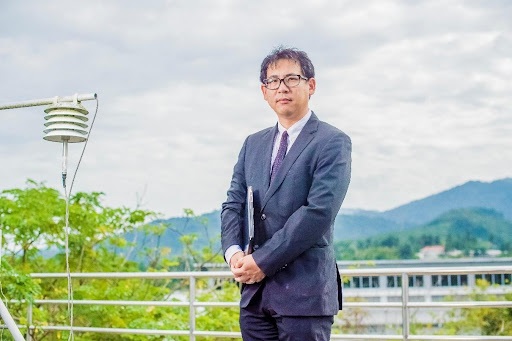The NVIDIA DGX A100 system has been deployed in the University of Nottingham Malaysia (UNM), the first in the country to do so in order to have the high performance computing (HPC) performance needed for artificial intelligence (AI) research, teaching and learning.
The DGX A100 system will be operational at the end of February, with an expected higher throughput and increased efficiency for its research community of undergraduate and post-graduate students, and academics.
UNM is one of two campuses of the University of Nottingham in the UK, which was founded in 1881. It is heavily involved in research to address global challenges, all of which requiring powerful computing resources. Efforts include AI and advanced data analysis, and more specifically, computer vision, machine learning and neural computation.

UNM also supports groups researching development of sustainable societies, inclusion in the workplace, nanotechnology, and smart manufacturing, with the Asia Research Institute Malaysia, Centre for Green Technologies, Future Food Malaysia, and Institute for Aerospace Technology among some of its users. These projects rely on modern AI techniques, particularly deep learning, and often adopt simulation-based approaches in a large variety of application areas.
As such, the NVIDIA DGX A100 has made its way to Malaysia to assist, being a universal system for all AI workloads with five petaflops of AI performance for unprecedented compute density, performance and flexibility. Using the system’s NVIDIA Multi-Instance GPU (graphic processing unit) technology, UNM will be able to flexibly allocate computing capabilities across every AI workload, supporting individual researchers to large teams.
“The NVIDIA DGX A100 is particularly attractive because it combines a large number of powerful GPUs that can be reconfigured and combined in multiple ways depending on user requirements.”
“It offers unique levels of flexibility that can cater to our wide spectrum of use cases, from researchers with heavy individual workloads, to large classes of undergraduate students, each with smaller workloads.”
Tomas Maul, associate professor, Faculty of Science and Engineering at UNM

The system will be centralizing UNM’s HPC/GPU solutions and offer more computing flexibility to its academics and students to further accelerate research outputs.
Data science is increasingly a core component of commercial industries with high demand for skilled data scientists. NVIDIA DGX A100 will be used to help further the AI capabilities of the university’s research community through the NVIDIA Deep Learning Institute, which provides hands-on self-learning tools to advance knowledge in areas such as AI, accelerated computing, accelerated data science, graphics and simulation.
“UNM provides a very conducive environment for our research, which spans areas such as scientific computation, fluid mechanics, AI and data analytics and which can inform new ideas in urban planning, the environment and remote sensing. We have had a lot of IT support, too, which is crucial given all the high-performance computers used to conduct our research. This provides a productive environment for us to work in.”
Professor Andy Chan, vice provost, Research and Knowledge Exchange at UNM

“Today’s problems are much more complex and require cross-domain expertise as well as very large datasets. AI is now a very fast-growing part of the workflow of traditional HPC research. With NVIDIA DGX A100, UNM’s research community will have the HPC power to drive their projects more efficiently for faster outcomes that make the world a better place.”
Dennis Ang, senior director of enterprise business for the SEA and ANZ region, Worldwide Field Operations, NVIDIA










![[EXCLUSIVE] Inside Japan’s Indie Game Revolution – An Interview with BitSummit Organizer Masahiko Murakami](https://cdn.gamerbraves.com/2025/05/BitSummit-Orgainzer_Interview_FI-360x180.jpg)
![[EXCLUSIVE] The Art of Adaptation: Developer Interview Details the OVERLORD Mobile RPG Lord of Nazarick](https://cdn.gamerbraves.com/2025/05/Lord-of-Nazarick_Interview_FI-360x180.jpg)
![[EXCLUSIVE] Taking Gundam in Bold New Directions – Interview with GQuuuuuuX Director Kazuya Tsurumaki](https://cdn.gamerbraves.com/2025/04/Kazuya-Tsurumaki_Interview_FI-1-360x180.jpg)


![[SEA Exclusive] From Shadows to Shipwrecks – Jennifer English Talks About Bringing Emotional Depth to Clair Obscur: Expedition 33](https://cdn.gamerbraves.com/2025/04/Clair-Obscur-Jennifer-English_Interview_FI-360x180.jpg)

![[EXCLUSIVE] Do the Game Interview – An Intimate Look at the Challenges of Game Development](https://cdn.gamerbraves.com/2025/04/Do-the-Game_Interview_FI-1-360x180.jpg)
![[EXCLUSIVE] Interview with the Minds Behind of Den of Wolves – 10 Chambers’ New Sci-Fi Heist FPS](https://cdn.gamerbraves.com/2025/04/Den-of-Wolves_Interview_FI-360x180.jpg)









![[GUIDE] SD Gundam G Generation Eternal Unit Tier List](https://cdn.gamerbraves.com/2025/04/SD-Gundam-G-Generation-Eternal-Tier-List_Review_FI-360x180.jpg)
![[GUIDE] Clair Obscur: Expedition 33 Tier List – From Gustave to Verso: Who Deserves Your Party Slot?](https://cdn.gamerbraves.com/2025/04/Clari-Obscur-Expedition-33-Character-Tier-List_Guide_FI-360x180.jpg)